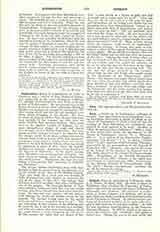

Sorbait, PAUL BE, physician, b. in Hainault, 1624; d. at Vienna, April 19, 1691. He went to school at Paderborn, then attended the University of Padua, where apparently he obtained his degree of Doctor of Philosophy and Medicine. He practiced as a physician at Rome, Cologne, and Arnheim, and in Au-gust, 1652, was made a member of the medical faculty of the University of Vienna. In 1655 he became professor of theoretical medicine at the same university, and in 1666 professor of practical medicine. In 1658 he was appointed court-physician to the Empress-Dowager Eleonora. In 1676 he rebuilt at his own expense the students’ hall “Goldberg” and added a chapel to it. During the year of the pest (1679), the Emperor Leopold I appointed him official councillor and chief supervisor of sanitary conditions in Vienna. Soon after this he was ennobled. In 1681 he resigned his professorship and founded a scholarship for medical students. During the siege of Vienna by the Turks in 1683 he commanded the company formed of students as chief sergeant-major. His tomb is in the Cathedral of St. Stephen at Vienna. In 1909 the national association of the official doctors of Austria selected Sorbait’s portrait as the insignia of the association. He gained a high reputation as a teacher at Vienna by zealous encouragement of anatomy and botany, as well as by firm adherence to the Hippocratic school. His prominent position in the year 1679 gave him the opportunity to organize sanitary conditions in Vienna. His writings show a harmonious mixture of profound thinking, strong piety, and a merry wit. His style frequently recalls that of the Augustinian monk and Viennese preacher Abraham a Santa Clara, but Sorbait was not an imitator of the latter, as the orations delivered upon receiving a higher position were delivered in part before 1666, consequently before Father Abraham‘s appearance as a speaker at Vienna.
Sorbait’s works are the following: “Universa medicines tam theorica quam practica” etc. (Nuremberg, 1672, 1675); this is his chief work. It was issued in a revised and enlarged form under the title: “Praxios medicae tractatus VII” (Vienna, 1680 and 1701); “Commentaria et controversiae in omnes libros aphorismorum Hippocratis” (Vienna, 1660); “Nova et aucta institutionum isagoge” (Vienna, 1678); “Modus promovendi doctores in archilyco Viennensi” (Vienna, 1667), in “Praxios medicae tract.”, 553-577; “Encomiastica neoprofessurae prolegomena”, oration delivered on entrance to his professorship, January 31, 1655; “Discursus academicus in renovatione magistratus civici”, January 7, 1669, in German; “Resignatio rectoratus”, November 25, 1669; “Exhortatio in honorem St. Barbar”, January 25, 1664; all these are to be found in the “Prax. med. tract.”, 578-90; “Die Johann Wilhelm Mannagellasche Pestordnung im Auftrag der Regierung von P. Sorbait herausgegeben and vermehrt” (1679); “Consilium medicum seu dialogus loimicus de peste Viennensi” (Vienna, 1679; also in German, 1679; 1713; Berlin, 1681), Sorbait’s most popular book; “Catalogus rectorum” (Vienna, 1669 and 1670). He also wrote short articles which are to be found in the “Miscellanea curiosa academiae caesareae Leopoldinae II, III”.
LEOPOLD SENFELDER

